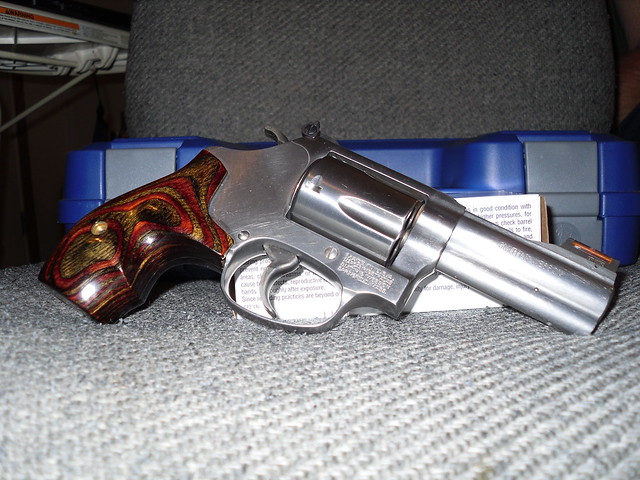Pond James Pond
New member
Long post: sorry...
A couple of things got me thinking recently. That in itself is an acheivement!
Those things were a discussion about the perception of what should be a gun's lifespan (round-count wise), another was about the purpose of training with guns that are or aren't one's EDC and finally my own enquiries into the real world build of Taurus guns (namely snubbies).
I agree with the statement that, whilst any training is better than none, training regularly with your EDC will pay greater dividends should you ever need it. So that means putting a respectable amount of lead down range, through your EDC.
I can also see that pocket revolvers and pistols are far easier to carry around than something bigger and, invariably, lighter will make that even more convenient. So now we might have a lighter firearm putting a lot of lead downrange.
Thirdly, I can see that a gun made to be light-weight, eg the LCR, LCP, small Kahr models or S&W J frame airweights might not be as resilient as a beefier cousins.
So now we might have a lighter firearm putting a lot of lead downrange whose maximum round count may be significantly lower than a beefier cousin.
A case study: Right now I have an itch for a snub. Could be a used Taurus Model 85, a used S&W Model 60 or, if I save up for a decade or so, a new Ruger LCR.
However, I find myself wondering that, if I decided to practice with it a fair amount (say 30 % or my range time/ >1000 per annum), should I be thinking in terms of which gun will handle the most shooting into the equation, and not just which do I like most, or which is lightest?
In other words will the training I put into my EDC, were I to buy one, adversely affect its longevity and so reliability in that role, over the medium to long-term? If so, can I afford to ignore that?
I'm curious, do those of you choosing a smaller, pocket-type, EDC try to factor in training time and the possible affect that might have on reliability, or do you purely think about whether it will go bang when you need it to in an SD scenario?
My worry would be the training to give me the skill-set needed would take away from that gun's own dependability over time.
A viable concern?
A couple of things got me thinking recently. That in itself is an acheivement!
Those things were a discussion about the perception of what should be a gun's lifespan (round-count wise), another was about the purpose of training with guns that are or aren't one's EDC and finally my own enquiries into the real world build of Taurus guns (namely snubbies).
I agree with the statement that, whilst any training is better than none, training regularly with your EDC will pay greater dividends should you ever need it. So that means putting a respectable amount of lead down range, through your EDC.
I can also see that pocket revolvers and pistols are far easier to carry around than something bigger and, invariably, lighter will make that even more convenient. So now we might have a lighter firearm putting a lot of lead downrange.
Thirdly, I can see that a gun made to be light-weight, eg the LCR, LCP, small Kahr models or S&W J frame airweights might not be as resilient as a beefier cousins.
So now we might have a lighter firearm putting a lot of lead downrange whose maximum round count may be significantly lower than a beefier cousin.
A case study: Right now I have an itch for a snub. Could be a used Taurus Model 85, a used S&W Model 60 or, if I save up for a decade or so, a new Ruger LCR.
However, I find myself wondering that, if I decided to practice with it a fair amount (say 30 % or my range time/ >1000 per annum), should I be thinking in terms of which gun will handle the most shooting into the equation, and not just which do I like most, or which is lightest?
In other words will the training I put into my EDC, were I to buy one, adversely affect its longevity and so reliability in that role, over the medium to long-term? If so, can I afford to ignore that?
I'm curious, do those of you choosing a smaller, pocket-type, EDC try to factor in training time and the possible affect that might have on reliability, or do you purely think about whether it will go bang when you need it to in an SD scenario?
My worry would be the training to give me the skill-set needed would take away from that gun's own dependability over time.
A viable concern?



